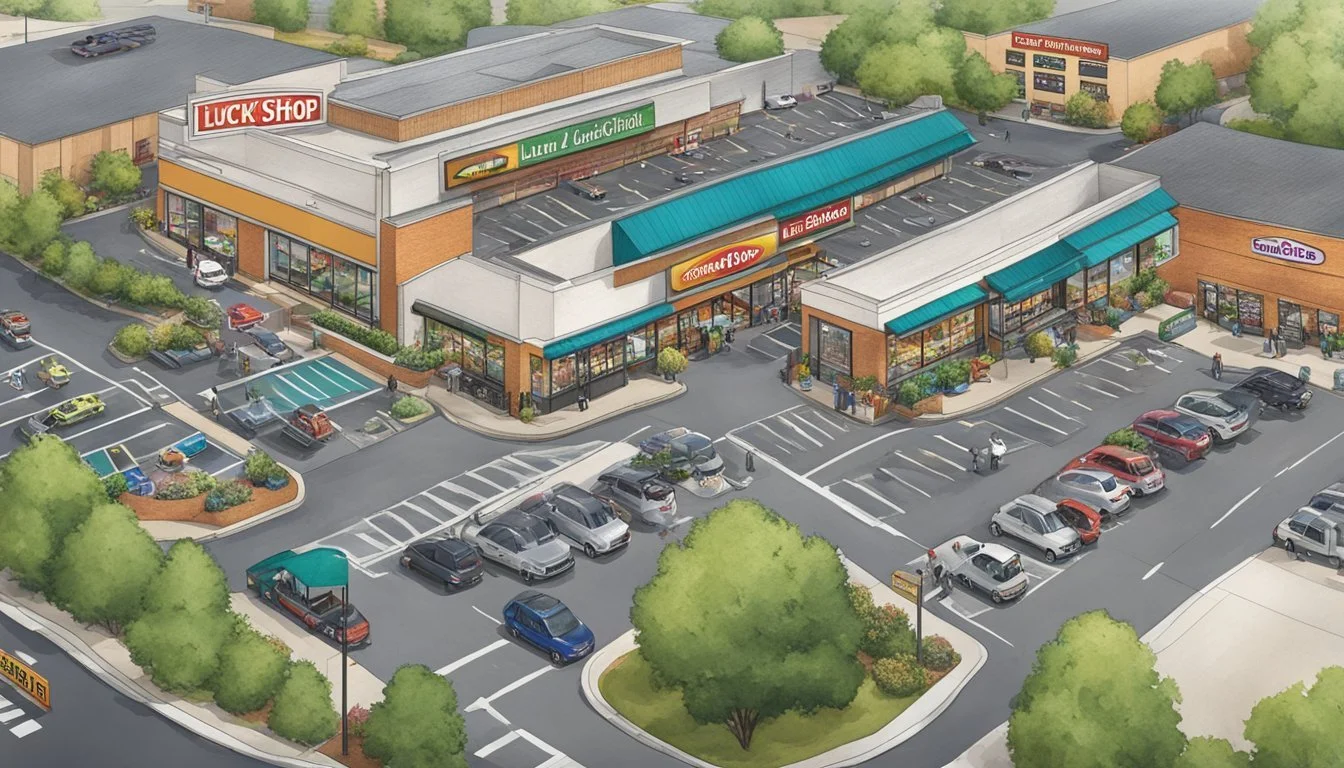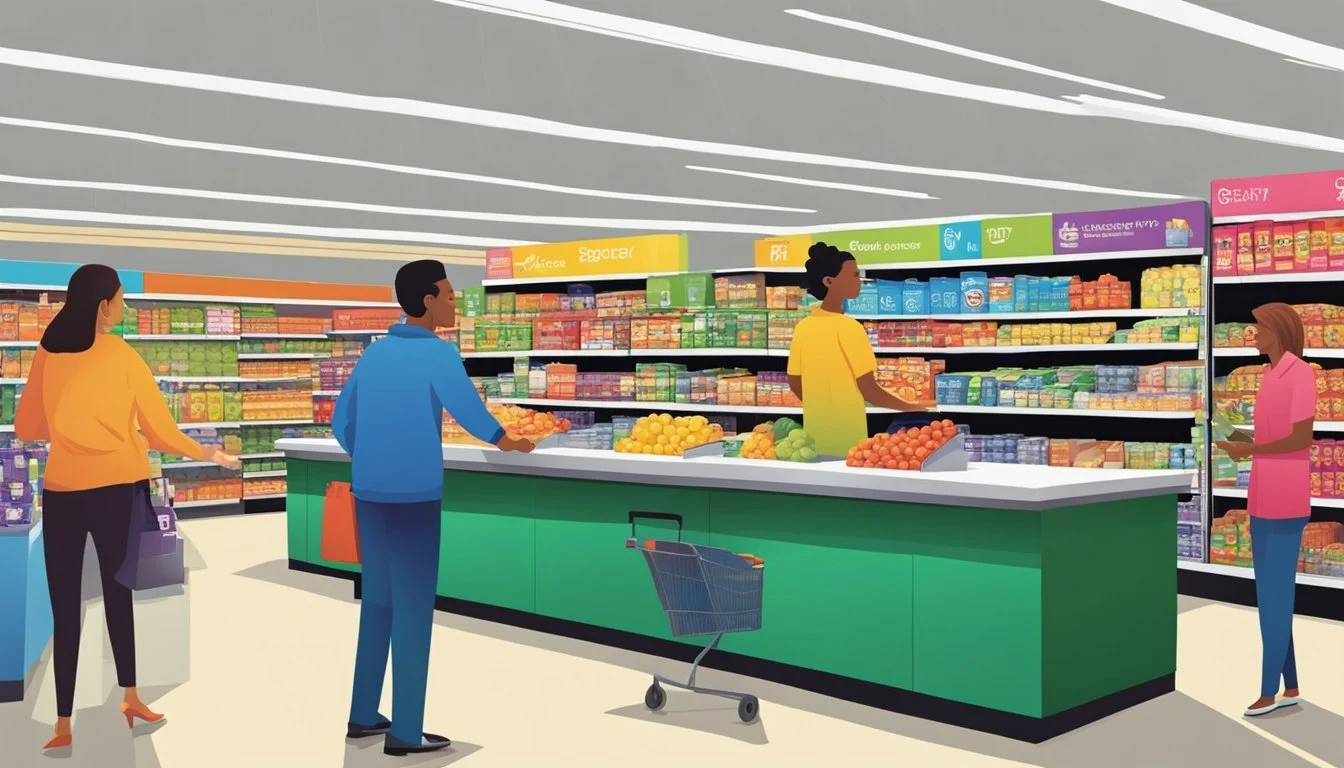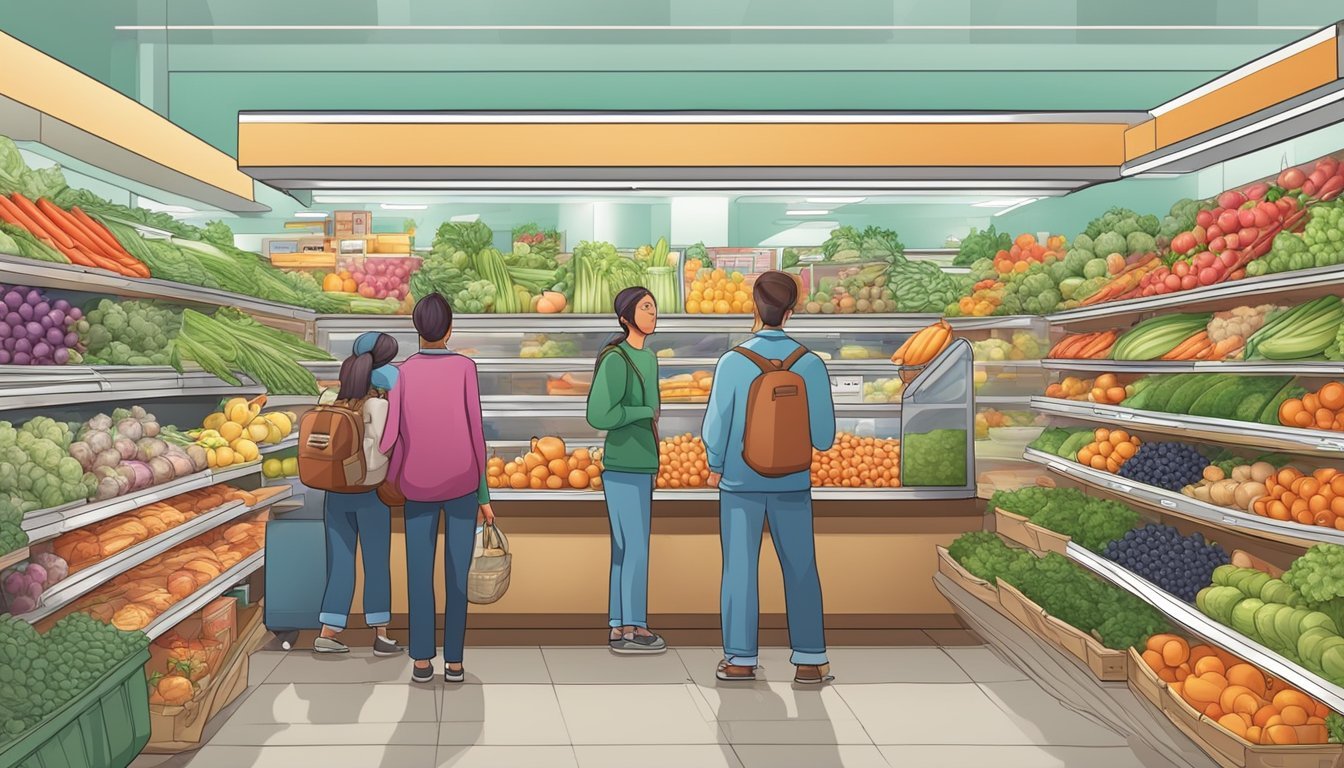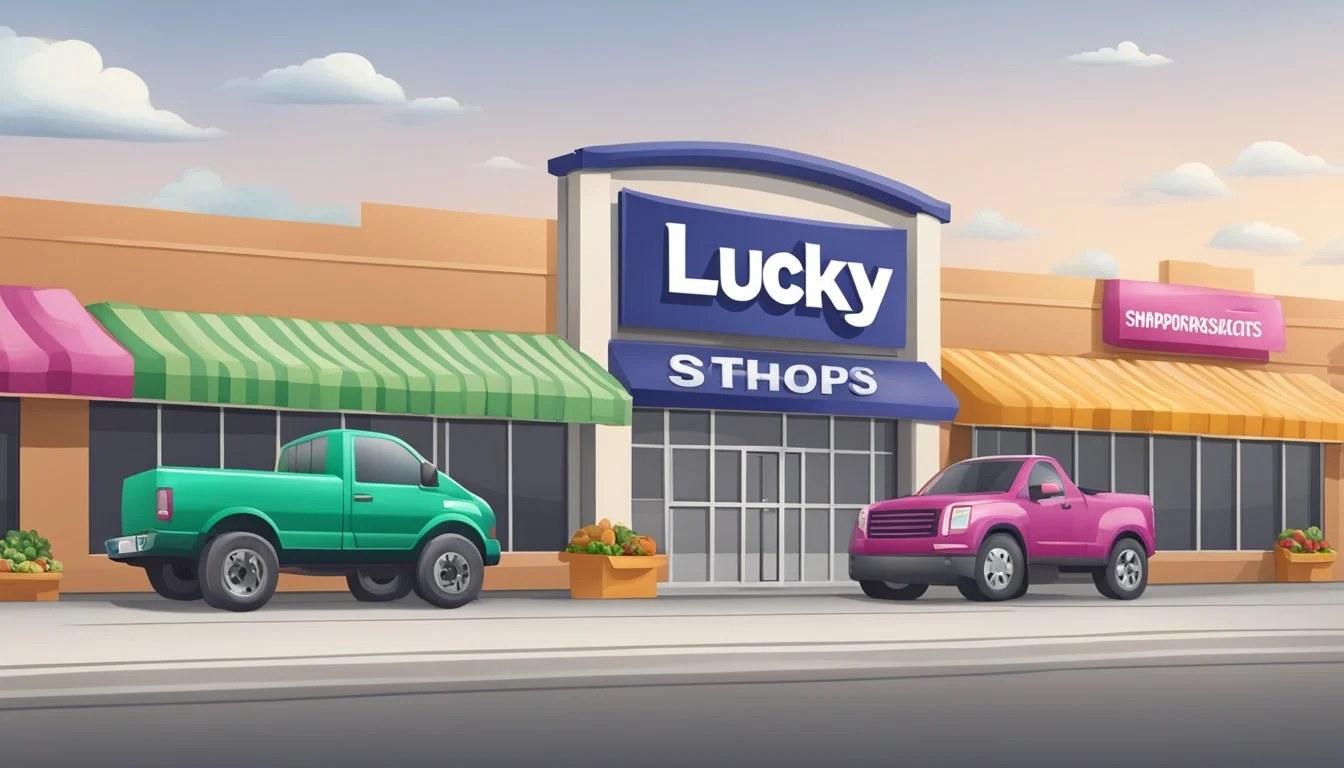Lucky Supermarkets vs Stop & Shop
A Comprehensive Comparison of Prices, Selection, and Service
Grocery shopping is a regular task for most households, and choosing the right store can significantly impact your budget and overall experience. Lucky Supermarkets and Stop & Shop are two well-known grocery chains that cater to different regions of the United States. Both stores offer a wide range of products, but they differ in pricing, selection, and customer service.
When comparing Lucky Supermarkets and Stop & Shop, several factors come into play. Stop & Shop tends to have higher prices compared to some other grocery chains, while Lucky Supermarkets often offers competitive pricing on many items. This difference can add up to substantial savings over time for budget-conscious shoppers.
Beyond pricing, each store has its own strengths. Lucky Supermarkets is known for its fresh produce and ethnic food selections, particularly in Asian and Hispanic cuisines. Stop & Shop, on the other hand, boasts a long history and extensive presence in the Northeast, with a focus on convenience and a wide variety of products, including specialty cheeses and organic options.
Company Overviews and Histories
Lucky Supermarkets and Stop & Shop both have rich histories spanning several decades in the American grocery industry. These companies have evolved significantly since their founding, adapting to changing consumer needs and market conditions.
Lucky Supermarkets at a Glance
Lucky Supermarkets began in San Leandro, California in 1935. The chain grew to become a prominent grocery retailer in the western United States. In 1998, Lucky's parent company, American Stores, was acquired by Albertsons.
By 1999, the Lucky brand had disappeared from most markets. However, in 2006, the Lucky name resurfaced in an unexpected way. Grocery Outlet briefly attempted to use the Lucky trademark in California, but quickly backed off.
Currently, Lucky Stores operates under two different companies. Albertsons runs Lucky stores in Utah, while Save Mart Supermarkets manages Lucky locations in Northern California.
Stop & Shop: A Brief History
Stop & Shop's origins trace back to 1892 when Solomon and Jeanie Rabinowitz opened a small grocery shop in Boston's North End. The company officially recognizes 1914 as its founding year, when the Rabinowitz family started the Economy Grocery Stores Corporation in Somerville, Massachusetts.
Key milestones in Stop & Shop's history include:
1925: The company goes public
1947: Rebranded as Stop & Shop, Inc.
1982: Opened the first Super Stop & Shop
1988: Taken private
Stop & Shop pioneered the superstore concept, combining groceries with general merchandise. Their Super Stop & Shop stores were massive, averaging 55,000 to 60,000 square feet, and featured a unique "street of shops" layout.
Geographical Footprint
Lucky Supermarkets and Stop & Shop have distinct regional presences, with each chain focusing on different parts of the United States. Their store locations reflect their market strategies and historical roots.
Lucky Supermarkets: Locations
Lucky Supermarkets primarily operates in Northern California. The chain has approximately 70 stores spread across the San Francisco Bay Area and the Central Valley. Key cities with Lucky Supermarkets include San Francisco, San Jose, and Sacramento.
Lucky's compact footprint allows it to tailor its offerings to local preferences. The chain maintains a strong presence in urban and suburban areas, often serving as a neighborhood grocery store.
Stop & Shop: East Coast Presence
Stop & Shop boasts a much larger geographical reach, with over 400 stores across the northeastern United States. The chain has a significant presence in Massachusetts, Connecticut, Rhode Island, New York, and New Jersey.
Stop & Shop's extensive network includes both urban and suburban locations. Major metropolitan areas like Boston, New York City, and their surrounding suburbs are well-served by Stop & Shop stores.
The company's East Coast focus allows it to leverage regional distribution networks and adapt to northeastern consumer preferences. Stop & Shop's wider geographical spread provides it with greater market penetration and brand recognition in its operating area.
Price and Cost Analysis
Lucky Supermarkets and Stop & Shop offer different pricing strategies and savings opportunities for shoppers. Their product costs and discount programs can significantly impact customers' grocery budgets.
Comparing Product Prices
Lucky Supermarkets generally offers competitive pricing on many grocery items. Their store brand products tend to be particularly cost-effective alternatives to national brands.
Stop & Shop's prices are typically higher than discount chains. A Consumer Reports study found Stop & Shop's prices to be among the highest of surveyed grocery stores.
For staple items like milk, eggs, and bread, Lucky often edges out Stop & Shop on regular pricing. However, Stop & Shop frequently runs sales that can temporarily lower costs on select items below Lucky's everyday prices.
Produce pricing varies seasonally at both chains. Lucky tends to have lower overall produce costs, especially for conventional fruits and vegetables.
Discount and Savings Programs
Lucky Supermarkets provides digital coupons through its app and website. Shoppers can load offers directly to their rewards card for automatic savings at checkout.
Stop & Shop's Gas Rewards program allows customers to earn points on grocery purchases. These points can be redeemed for discounts on fuel at participating gas stations.
Both chains offer weekly circular ads with sale prices. Lucky typically features more items at discounted prices in their weekly ads compared to Stop & Shop.
Stop & Shop's loyalty program provides personalized deals based on purchase history. Lucky's rewards program focuses more on earning points for future discounts rather than personalized offers.
Variety and Quality of Products
Lucky Supermarkets and Stop & Shop offer distinct product selections and quality standards. Their offerings in produce, meats, and branded items differ in several key aspects.
Produce and Meat Quality
Lucky Supermarkets emphasizes fresh, locally-sourced produce. Their fruits and vegetables are often selected from regional farms, ensuring peak freshness. The meat department features a diverse range of cuts, including organic and grass-fed options.
Stop & Shop's produce section provides a wide variety of fruits and vegetables, with a mix of local and imported items. Their meat department offers standard cuts alongside specialty meats. The chain has implemented quality control measures to maintain consistent standards across stores.
Both stores conduct regular quality checks, but Lucky Supermarkets tends to receive higher customer ratings for produce freshness.
Brands and Labels Available
Lucky Supermarkets carries a balanced mix of national brands and their own private label products. Their store brand offers quality alternatives at competitive prices. The chain also features a selection of gourmet and international items.
Stop & Shop stocks major national brands alongside their own private label, "SB". The SB line covers a wide range of products, from pantry staples to prepared meals. Stop & Shop also carries a variety of specialty diet products, including gluten-free and organic options.
Both stores offer online ordering and delivery services, expanding access to their product ranges.
Service and Shopping Experience
Lucky Supermarkets and Stop & Shop offer distinct service and shopping experiences. Both chains prioritize customer satisfaction but differ in their approaches to store layout and convenience features.
Customer Service Evaluations
Lucky Supermarkets emphasizes a personalized approach to customer service. Staff members are trained to be friendly and attentive, often greeting customers by name in smaller communities. The chain focuses on quick problem resolution and maintains a dedicated customer service desk in most locations.
Stop & Shop implements a more standardized customer service model. The company invests in employee training programs to ensure consistent service across all stores. Self-service kiosks are available for price checks and product inquiries, reducing wait times for simple questions.
Both chains offer loyalty programs, but Stop & Shop's program is generally considered more robust, offering personalized deals and gas points.
Store Layout and Convenience
Lucky Supermarkets typically features a compact layout, making it easier for shoppers to navigate quickly. Aisles are organized by product type, with clear signage to guide customers. The chain often places fresh produce near the entrance to create an appealing first impression.
Stop & Shop stores are usually larger, offering a wider range of products. The layout includes specialized departments like bakery, deli, and pharmacy. Many locations feature in-store cafes and expanded prepared food sections.
Both chains prioritize cleanliness, with regular cleaning schedules throughout the day. Stop & Shop tends to have more checkout lanes and often includes self-checkout options, potentially reducing wait times during peak hours.
Consumer Perceptions and Loyalty
Consumer perceptions and loyalty play crucial roles in determining grocery store preferences. Survey data, reviews, and loyalty programs significantly influence shopping behaviors and store choices.
Survey Data and Consumer Reports
Consumer Reports regularly conducts surveys to gauge customer satisfaction with grocery stores. These surveys evaluate factors like cleanliness, product quality, and service. Lucky Supermarkets and Stop & Shop have received mixed ratings in recent years.
Lucky's Market has garnered praise for its produce quality and variety. Customers appreciate the store's focus on fresh, organic options. Stop & Shop, on the other hand, has received positive feedback for its competitive pricing and convenient locations.
Both stores have faced criticism in certain areas. Some consumers report concerns about long checkout lines at Stop & Shop during peak hours. Lucky's Market has been noted to have higher prices on some items compared to competitors.
Loyalty Programs Effectiveness
Loyalty programs are key tools for grocery stores to retain customers and boost sales. Stop & Shop's Gas Rewards program has proven popular among families, offering fuel discounts based on grocery purchases.
Lucky's Market's rewards program focuses on personalized offers and digital coupons. This approach has resonated with tech-savvy shoppers who appreciate targeted deals. Both stores have seen increased customer retention through these initiatives.
Data shows that loyalty program members tend to shop more frequently and spend more per visit. However, the effectiveness varies between demographics. Younger consumers often prioritize immediate discounts, while older shoppers value long-term rewards.
Grocery chains continually refine their loyalty strategies to meet evolving consumer preferences. Mobile apps and digital integration have become increasingly important in program engagement and success.
Innovations and Market Trends
Lucky Supermarkets and Stop & Shop are adapting to shifting consumer preferences and technological advancements. Both chains are implementing new strategies to enhance customer experiences and stay competitive in a rapidly evolving grocery landscape.
E-Commerce and Online Shopping
Lucky Supermarkets and Stop & Shop have expanded their e-commerce offerings. Both now provide online ordering and delivery services through their websites and mobile apps. Stop & Shop has partnered with Instacart for same-day grocery delivery, while Lucky Supermarkets offers its own in-house delivery service.
Key features:
Mobile apps for easy ordering
Curbside pickup options
Flexible delivery windows
Stop & Shop has integrated Amazon Lockers in some stores, allowing customers to pick up Amazon packages while grocery shopping. This move aims to increase foot traffic and provide added convenience.
Health and Organic Focus
Both chains have increased their selection of organic and health-focused products. Stop & Shop has expanded its Nature's Promise brand, offering affordable organic options across various categories. Lucky Supermarkets has introduced more local and sustainable produce sections.
Health-focused initiatives:
Dedicated gluten-free aisles
In-store nutritionists at select locations
Expanded plant-based protein options
Lucky Supermarkets has partnered with local farms to source fresh, organic produce. This approach appeals to health-conscious consumers and supports local agriculture.
Response to Competitors
To compete with discount chains like Aldi and Walmart, both Lucky Supermarkets and Stop & Shop have implemented price-matching policies. They've also increased their private label offerings to provide value-oriented options.
Competitive strategies:
Enhanced loyalty programs
Personalized digital coupons
In-store experiences (cooking demos, tastings)
Stop & Shop has renovated stores to create a more modern shopping environment, while Lucky Supermarkets has focused on improving its fresh departments to differentiate from competitors like Trader Joe's. Both chains are investing in technology to streamline operations and reduce costs.
Corporate Responsibility and Sustainability
Lucky Supermarkets and Stop & Shop both implement various initiatives to address environmental concerns and support their local communities. Their efforts aim to reduce their ecological footprint and give back to the areas they serve.
Environmental Initiatives
Lucky Supermarkets focuses on energy efficiency in its stores. They have installed LED lighting and upgraded refrigeration systems to reduce electricity consumption. The chain also promotes reusable bags and offers recycling programs for plastic bags and bottles.
Stop & Shop has made strides in sustainable sourcing. They prioritize locally grown produce and work with suppliers to improve farming practices. The company has set targets to reduce food waste by 50% by 2030.
Both chains have implemented composting programs in select locations. They divert organic waste from landfills, turning it into nutrient-rich soil for gardening.
Community Involvement
Lucky Supermarkets partners with local food banks to donate surplus groceries. They organize regular food drives and encourage customers to contribute non-perishable items.
Stop & Shop runs an annual hunger relief program called "Food for Friends." This initiative raises funds and collects food donations for regional food banks and pantries.
Both chains offer educational programs in nearby schools. Lucky Supermarkets focuses on nutrition education, while Stop & Shop emphasizes environmental awareness.
The companies also support local charities through monetary donations and employee volunteer programs. These efforts help strengthen ties with their communities and address specific local needs.
Final Comparison and Conclusions
Lucky Supermarkets and Stop & Shop both offer distinct advantages to shoppers. Lucky Supermarkets often provides competitive pricing on everyday items, appealing to budget-conscious consumers.
Stop & Shop boasts a wider selection of specialty and gourmet products. This variety caters to shoppers seeking unique or high-end groceries.
In terms of store atmosphere, Lucky Supermarkets typically maintains a no-frills environment focused on value. Stop & Shop stores tend to have a more polished appearance with additional amenities.
Loyalty programs differ between the chains. Lucky Supermarkets offers straightforward discounts, while Stop & Shop's program includes gas savings and personalized deals.
Product quality is generally comparable between the two, with both chains maintaining acceptable standards. However, individual experiences may vary by location and specific product categories.
For convenience, Stop & Shop's larger network of stores in the Northeast provides an edge in accessibility for many shoppers.
The choice between Lucky Supermarkets and Stop & Shop ultimately depends on individual priorities. Those prioritizing lower prices may prefer Lucky, while shoppers valuing variety and store amenities might lean towards Stop & Shop.
Both chains have their strengths, and shoppers are encouraged to compare prices on their most frequently purchased items at nearby locations to determine the best fit for their needs.








